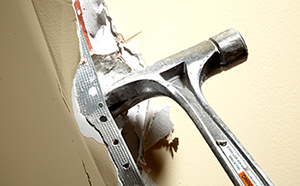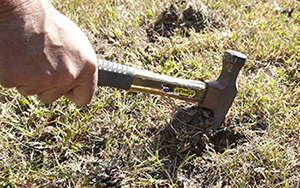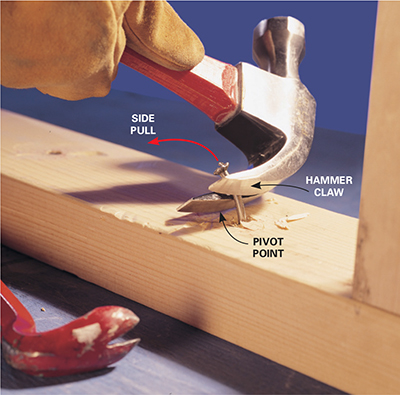
Pull sideways
The usual way to pull a nail is to lever the claw straight up. But when a nail won’t budge, yank the handle to the side. That puts the pivot point closer to the nail for more pulling power.

Pull sideways
The usual way to pull a nail is to lever the claw straight up. But when a nail won’t budge, yank the handle to the side. That puts the pivot point closer to the nail for more pulling power.
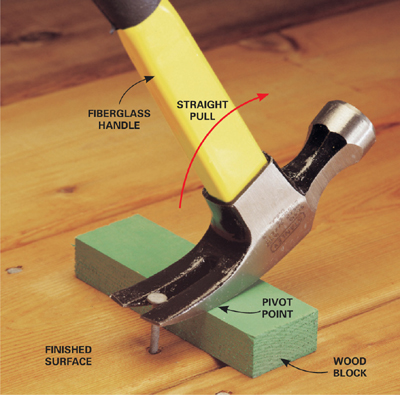
Pull against a block
A small block under the claw does two things: It protects the surface beneath it and provides more pulling power, especially after the nail is partially removed.
For most people and most jobs, a 16-oz. hammer is about right. Avoid hammers with a jagged “waffle” texture on the striking face. When you miss a nail, they do ugly things to surfaces—or your thumb.
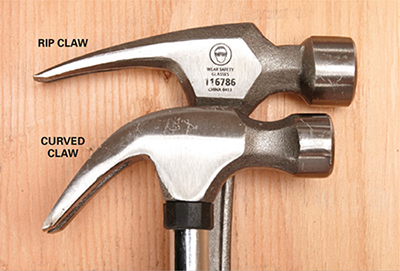
If you’re in the market for a hammer, buy one with a straight claw. Unlike a curved-claw hammer, a rip hammer—when swung backward—can dig holes, split wood and wreck stuff that needs wrecking.
